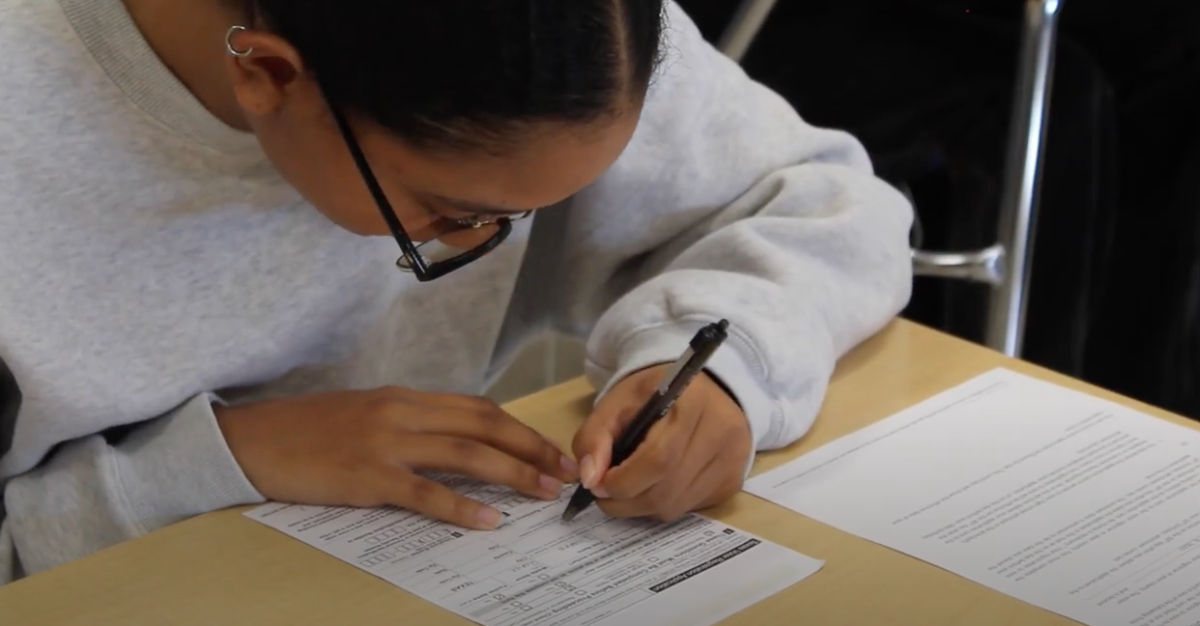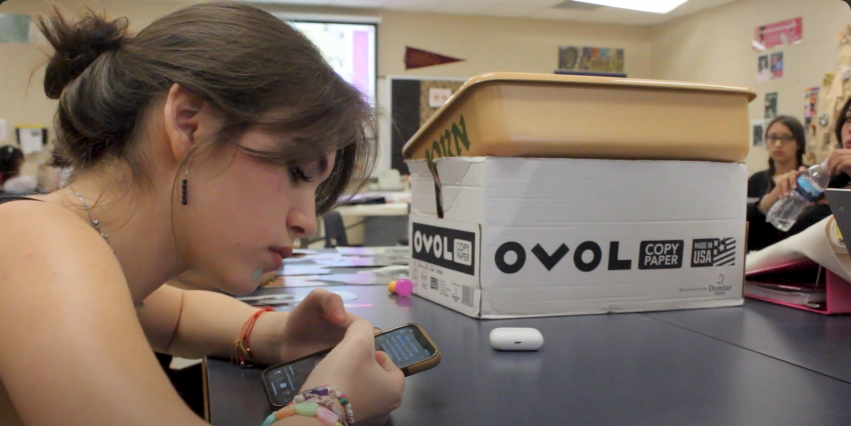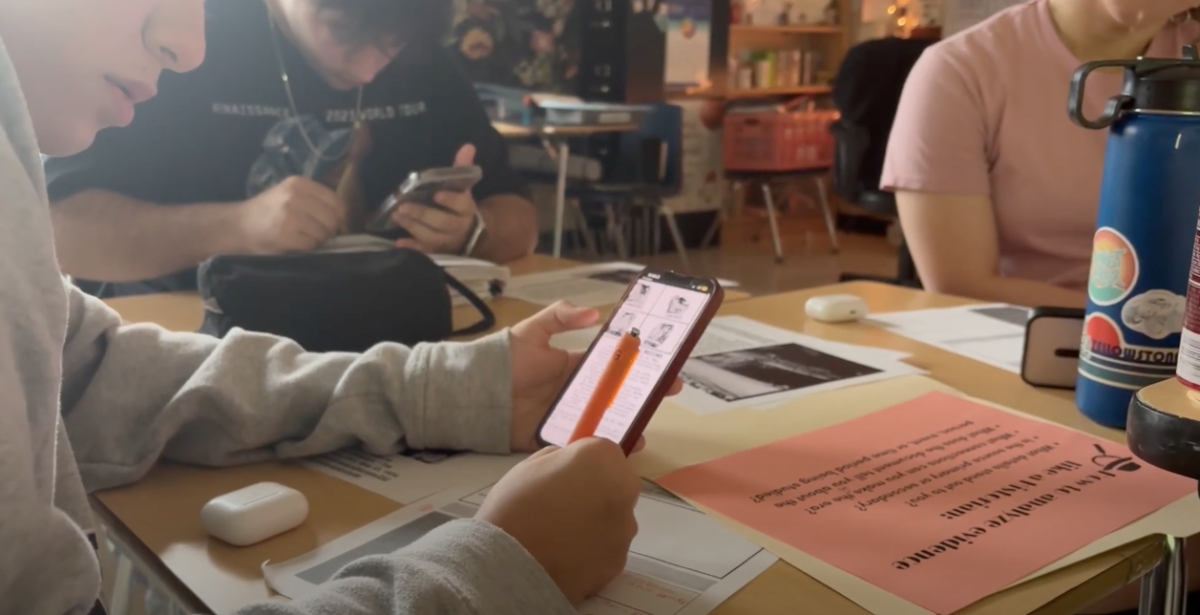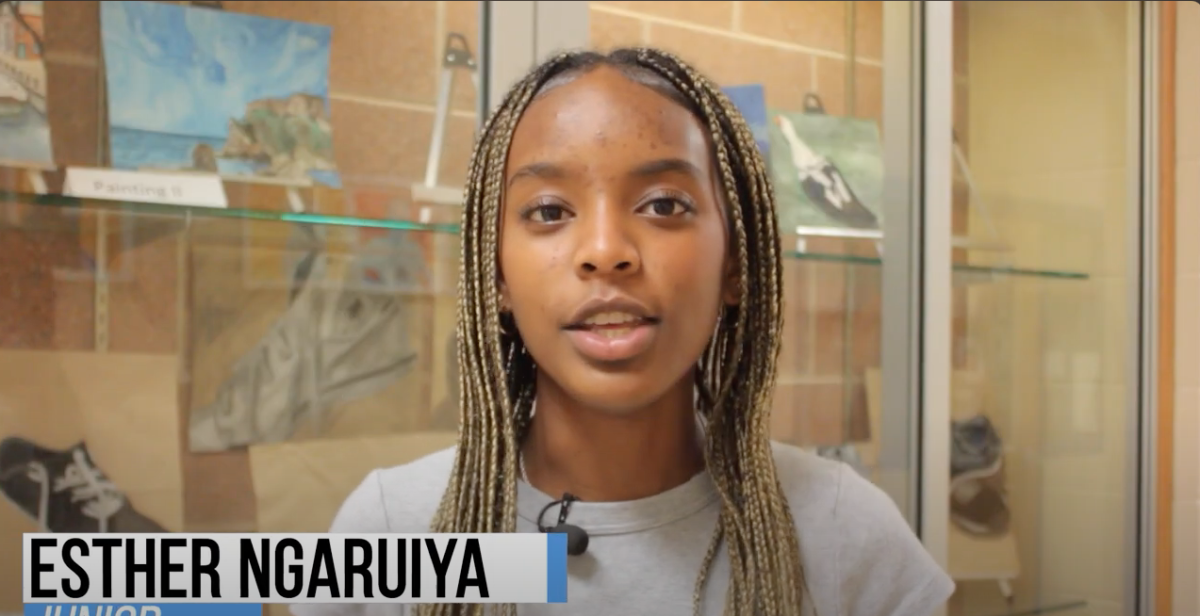by Emily Moore| Photo Editor
The PSAT- a test designed to force all the knowledge you gain in high school into one single, three hour test, then goes on to determine where you stand in the real world.
“Oh, the great paradox of education,” senior Brooke Nowakowski said.
While every student is required to take the test, not every student receives the same scoring. Some groups of students receive up to 35 extra points to their results due solely to their race. Well, okay, but what about the other fraction of students that aren’t Mexican, Native American, or African American? Are they supposed to just sit back and accept the fact that their very genetics and ethnic backgrounds are the very things holding them back from their goals?
“We’ve evolved past this in other areas of our culture, so it seems outdated. The curves should be indicated by economic standing or achievement,” art teacher Lia Politi said.
“I think that [the curve] detracts from the actual importance of the exam. I mean, if it can just boil down to your race, then how important is it? How important is my score, or how much I studied for this exam if someone could end up having a better future than me just because of their race? Why is this the crux of my future?” senior Bria Woods said.
On a deeper level, the curves start to change to dynamic of how the test itself is viewed. Transitioning from a test created to standardize the student majority to a test used as nothing more than a funnel for diversity into ethnic thirsty colleges; the PSAT not only takes away from its existence, but from the minds of those taking it.
“Deviating from the original meaning cheapens the experience. It’s like kids on these forms thinking about why they think they got the results they did. Because if it always breaks down to ‘Oh, well, I’m Hispanic. I only got this because of my race,’ then it sort of lowers your self-worth, because its like ‘Well, didn’t they like anything else about me? Don’t they like me for something I didn’t get to choose?” Nowakowski said.
“When you look at it, it’s beneficial on a superficial level. Why yes, I have 500 extra points on my exam, but it’s not because Kaplan so prepared me for this exam. It’s just because of my race,” Woods said.
While high school set backs may not seem catastrophic at the time, their continuation into college can have harder felt results – especially when the college neglects to incorporate scores into their decision, but only drafts admissions based on a lust for diversity.
“Well, now I just think they’re playing games. It’s just a game of ‘Well, we want diversity because we know we aren’t going to get it any other way.‘ I feel like its a caveat, that doubles back the whole issue, and I feel like they’re the ones shaving off the big deal. I think they’re highlighting minorities in a negative way, because ‘Ok, I’m in Harvard but only because the real standard is set to something other than with intelligence and what you’ve acquired academically,” Woods said.
“I think the idea is that your diversifying the experience too, because everyone that comes from different ethnic backgrounds will bring something else. So, they want people to be exposed to that many lifestyles, because there’s this fantasy that you’re creating educators, you’re creating people that are going to go out into the world, but that’s wrong too. Because we perpetuate an elitist system where you tell them ‘This is a special school. So the people here are special, these are the best people you can ever work with. So it must be great and they make your experience here wonderful. Why would you ever leave this experience?’ This is why we have an elitist corporation. We live in this world where the elites continue to only interact with one another because they have been taught, they have been brainwashed to believe that ‘These are the people I will get the best experience with. These are the people that get me. These are people like me.’ So really when you look a diversification, its just a matter of throwing other people into the cycle and saying ‘Yeah, you’re a part of this too. We’re not trying to diversify really anything, we’re just trying to make it look better from the outside that this is not just an elite that is never going to change,” Nowakowski said.
“It’s a good thing that students are getting recognized that other wise may not have, but putting emphasis on race makes it seem unfair,” Politi said.
Yet, even diversity creates a roadblock. For one thing, you have to have the same reactants every time to obtain the same products. It’s simple math. But when diversity is thrown in, it eliminates every possible reactant from generating the same products.
“Each student is a different substance. But they’re forcing us all through the same mold, and expecting us all to come out the same. When we don’t there’s only one other option-we get discarded; that’s not fair because if you want to get the same thing out, you need to put the exact same thing in, and that’s impossible. It’s called genetics,” Woods said.
In addition to race creating unfair implications at a college level later on, it can also detract from the work ethic put into the test from the beginning.
“Why is it that because someone is Native American that can trump someone that spent 12 hours everyday over the summer studying for the PSAT? We’re all given the same opportunity, we’re all taking this exam, the PSAT, we all should have access to the things we need to do our best on the PSAT. So why are you putting some people on a pedestal? Why are you putting some people on a ladder? I mean why are we starting at different places on the ladder? We should all be starting at the bottom, working our way honestly to the top,” Woods said.
“[The curve] acknowledges a discrepancy, but then there comes a point in society when, I don’t know if we’ve reached it now, but when is education equalized across ethnic backgrounds? So when is a curve unfair?” English teacher Gabriel Oviedo said.
Yet, when the test is analyzed on its own, its problems are as vast as the inner substances of the curves. This raises a flag to say that maybe it’s not only the curves that jeopardize the integrity of the exam; maybe it’s the exam itself.
“It’s just like a mannequin in a store window personifying fashion, or real or whatever, but still they’re just a fake. They’re just a mannequin. They’re not alive. They don’t do anything. Then that makes me think ‘If all you’re trying to do is something superficial then is the problem even the curves? Is it the test itself?’ I think it’s just the exam; for a couple of reasons. I don’t think it the best bridge from high school to college. I took a course over the summer and the teacher told us that the SAT is a mental alertness exam. Do you think that the collage you’re applying to cares whether you are mentally alert for three hours? Probably not. Because you’re going to be at their school way more than that. So why is it, again, why is it that my whole future is balancing on three hours? It doesn’t make any sense,” Woods said.
Other problems with the testing experience still loom even larger in the background – problems that have been overlooked and cast off as a ‘sensitive topic.’
“The information is so esoteric that its not meant for everybody anyways. So it’s not even the curves. The curves are not the first strike against minorities; it’s the esoteric information, that is meant for the more educated sector of students, and one can assume that this will not be your minorities. I mean, let’s face it, minorities aren’t always taking the crown when it comes to education or academics. So that’s why. Since they know that this test wasn’t even created to help the minority groups, then that’s what the curves are for. It’s this decade later attempt to make things more equal,” Woods said.
Even more than just overlooking slight issues, the test creates problems that, quite frankly, don’t follow an ounce of logic.
“Also, the colleges want to know what you learned in high school, and if they’re looking at this exam to determine what I learned in high school, then they’re looking at all the wrong things. If this exam is just supposed to test me on what I learned in high school, then why are places like Kaplan and the Princeton Review in business? I shouldn’t have to go to a third party school to learn the information that I will need for only three hours, to get into a place where I’ll be spending four years. That’s really bad math.” Woods said.
The test itself has many other ways of being dealt with, but most of these ways are too “out of line” that they cannot be put into action.
“You should just throw kids into a room with a book and say ‘You have 20 minutes to learn this new material’ , then throw them into the next room and test them. Never letting them know what the test is over, or what the material is. But of course, you can’t do that,” Nowakowski said.
Lying at the inner most part of the problem is the antithesis; which insists that the problem isn’t that it’s putting attention on something, it’s just that it’s putting attention on nothing but race.
“The wording is wrong; it shouldn’t be based on race, it should be something else,” Politi said.
At the end of the day, the curves are still there. Still jutting out like a sharp reminder of everything America has moved past, but apparently, not fully accepted.
“If knowledge is power, then too many people are graduating powerless,” Woods said.








